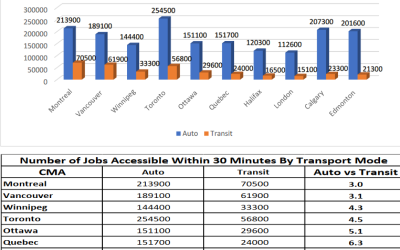Aéroports de Montréal, ‘ADM’, whose main asset, Montreal-Trudeau International Airport’s symbol is YUL, is the umbrella company for the airport serving metropolitan Montreal, domestically and internationally. Its market area is larger: most of Quebec and much of eastern Ontario. It is a non-profit, untaxed entity, which is managed autonomously, and ultimately owned by the federal government. Using an intrinsic value method, with fully taxed net income as a proxy for free cash flow, the entity’s value is estimated from a minimum of $1.58B to a maximum of $5.22B, with a tighter, more plausible range of a median (midpoint of all the relevant values) of $2.4B to a mean (simple average of all the relevant values) of $2.75B.
Under the market-based valuation system, using six standard valuation metrics (P/E, P/Sales, EV/Rev, EV/EBITDA, P/CF: trailing and forward Price/Earnings, Price/Sales; Price/Book Value; Enterprise Value to Revenue; Enterprise Value to Earnings Before Interest, Taxes & Depreciation & Amortization; Price/Operating Cash Flow), the current value ranges from $1.19B to $27.28B, with a median of $4.75B and a mean of $7.26B.
The company has positive operating cash flow and positive returns on assets, equity, and capital employed. Similar utility-like companies usually pay a dividend to investors. The company is showing sufficient income to pay a dividend; a plan to provide one would make its public market flotation more successful (several large airports around the world are already publicly listed and traded; others are owned by other investors, so divestment is quite normal).
Some scenario experiments indicate that YUL should have part of its debt extinguished to optimize total sale proceeds to the citizens of the city, region, province, and nation. As the entity’s debt level is a little high in relation to its cash generation capacity and its capital expenditure needs exceed operating cash flow, much, if not all of the first sale proceeds of treasury shares in a partial divestiture might or should be used to lower YUL’s debt and not go to government coffers. The experiments indicate, albeit not definitively, that using proceeds to retire at least one quarter of its long-term debt is likely the optimal strategy.
One nonsensical and dysfunctional policy of the federal government is to charge YUL substantial rent on the land it occupies, raising the costs and lowering the margins of YUL. This increases costs to airlines and their passengers. As Ottawa also owns YUL, it is effectively charging rent to itself, serving only to make YUL and air travel less attractive and lower the potential value of the entity. Additional scenarios are included in this report that explores what the removal of this expense would do to YUL’s valuation: it increases it substantially.



